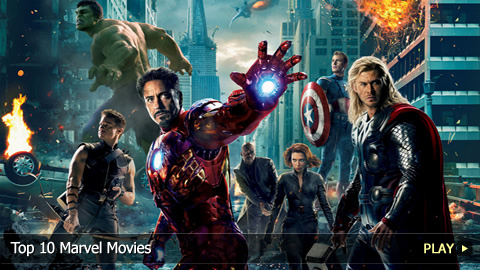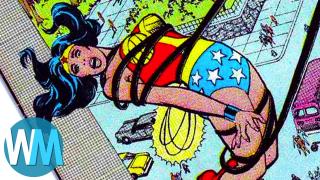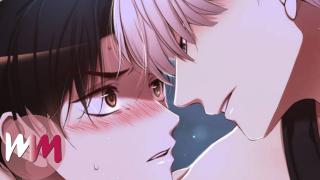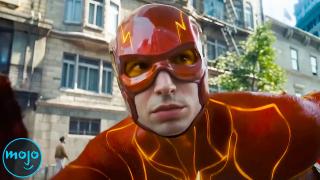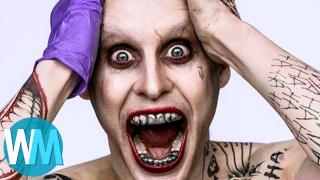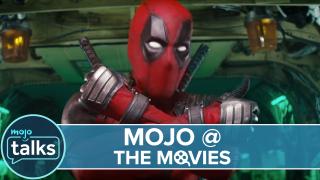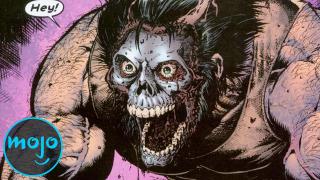Adapting the Incomparable Grant Morrison
Grant Morrison’s Wikipedia page describes him as a “Scottish comic book writer, playwright, and occultist.â€
Needless to say, he’s a bit of an oddball.
Morrison started writing comics in the 80s, and over his long career, he’s become one of the premier creators in the industry, writing character-defining stories for Batman, Superman, the X-Men, and more. In 2012, he collaborated with artist Darick Robertson to create the four-issue mini-series “Happy!†which has now been adapted for television on the Syfy network.
“Happy!†seems like a strange choice for an adaptation, especially given Morrison’s long list of more popular creator-owned comics like “The Invisibles†and “The Filth†– or at least, that’s what we thought when it was first announced. Seeing the finished product, “Happy!†and the broken, criminal anti-hero at its center fit in nicely in the long tradition of “Difficult Men†in the Peak TV era.
Morrison wrote the pilot with Brian Taylor, the show’s creator and the director of the “Crank†franchise and “Ghost Rider: Spirit of Vengeance.†Taylor’s frantic camera adds another level of intensity to an already wild story, and if you’re familiar with any of his previous work, his creative touch will be instantly recognizable.
It’s a relatively faithful adaptation – the one major change in this first episode being the twist that Hailey is, in fact, Nick’s daughter, which is only revealed about half-way through the book. What stands out, though, isn’t the direction, the writing, or even the titular blue horse – Christopher Meloni as Nick Sax steals the show, plain and simple.
If you like your ultra-violent, nihilistic crime shows with a dash of comic absurdity, then you will probably love “Happy!†If none of that appeals to you, there isn’t much on offer to keep you interested, and you’re probably better off skipping this one altogether.
Who is Grant Morrison?
What Morrison doesn’t get enough credit for is being one of the greatest genre reconstructionists of our time – maybe ever.
According to TV Tropes:
“Deconstruction demonstrates what happens when tropes in fiction are played for realism. Thus, a fantasy about being a princess or a superhero is shown to have consequences, negatives, other facets, etc that are glazed over in fiction. The trope no longer works the same, so it doesn’t look the same.
This is where Reconstruction comes in. A Reconstruction accepts the criticisms of the initial fantasy made in the previous Deconstruction and then modifies it into something that would resemble the original trope, but still work in reality.â€
Morrison is unparalleled in the superhero genre for being able to take what most would consider silly or childish concepts from the early days of the medium (Bat-Mite, The Bottle City of Kandor) and use them to create truly touching and memorable character moments.
But while his British contemporaries – namely Alan Moore – we’re deconstructing the superhero genre, Morrison was frantically reconstructing it and recontextualizing it for a new generation of readers, who saw the “Silver Age†of comic books as campy kid’s stuff – perhaps rightfully so. While Moore’s revival of Mick Anglo’s “Marvelman†in 1982, and later his groundbreaking epic “Watchmen†in 1986, took familiar superhero archetypes and tropes and added the gritty realism that would eventually become his signature, Morrison used those same archetypes and tropes and imbued them with a magical, absurdist energy. To Morrison, the comic book stories of the “Silver Age†were filled with absurdity, humor, heart, and spectacle – this was modern mythology and deserved to be treated with respect.
So without further ado, here are the 5 best Grant Morrison comics:
#5: “JLA: Rock of Ages†(1998)

Darkseid has finally learned the Anti-Life Equation – need we say more? This story is cosmic, bizarre, and incorporates many of the concepts and characters from Jack Kirby’s “New Gods†which gives everything an epic, otherworldly scale. The stakes could not be higher, yet Morrison keeps the pace of action relatively easy to follow, and everything remains character-driven. If you can get over the dated look of Superman Blue (a product of the continuity of the time) then you should pick this one up ASAP.
#4: “Batman R.I.P.†(2008)

Earlier, we mentioned Bat-Mite, an imp dressed in a Batman suit with magical powers introduced in “Detective Comics†#267 way back in 1959. Since his creation, Batman underwent huge changes, slowly becoming the gritty, vengeful Caped Crusader we know from Frank Miller’s “The Dark Knight Returns†and Alan Moore’s “The Killing Joke.†This version of the character is widely considered the “real†Batman – and there’s no way that version of the character could exist in the same continuity as a magical imp, right?
Wrong – according to Grant Morrison, at least. He returned Bat-Mite to fold in “Batman†#672, where Bruce sees the imp after being shot and going into cardiac arrest. Towards the end of the arc, Morrison reveals that Bat-Mite is, in fact, a figment of Bruce’s imagination, but as to whether or not he’s real… well, that’s a little more complicated. Imagination, according to Bat-Mite, is a dimension of reality all itself – the 5th dimension, to be exact. Sure, the story features a super creepy version of the joker and some incredible moments, like Batman digging himself out of a grave “Kill Bill†style, it’s this moment with Bat-Mite that sticks out as the perfect example of what Morrison’s storytelling is all about.
#3: “The Invisibles†(1994-2000)

The story goes that part of the narrative of “The Invisibles” was told to Morrison when he was abducted by aliens while visiting Kathmandu. The Invisibles are a team of freedom fighters who have been described as the X-Men on acid, which is not too far off. The leader of the cell we follow is King Mob, the dome-headed, sun-glass wearing rockstar who shares a striking resemblance to Morrison himself. We won’t do you the disservice of trying to describe this series to you; you’re better off reading it for yourself. One thing we can tell you is that you’ve never seen or read anything like it because there isn’t anything like it.
#2: “Arkham Asylum: A Serious House on Serious Earth†(1989)

It’s dark, it’s twisted, and it’s the book that really put Morrison on the map, cementing his status as a premier comics writer from the moment it was released way back in 1989. At the time, no one had ever seen anything like it, with Dave McKean nightmarish art style overwhelming many traditional comic book fans, but it’s the deeply disturbing narrative and images that have made this an essential Batman story.
#1: “All-Star Superman†(2005-08)

Probably the quintessential Morrison story, this 12-issue arc is simultaneously modern and classic, creating a timeless quality that fully represents the Man of Steel’s long history. It re-introduced and plays with many of the elements that have been a part of Superman’s history practically since the beginning; particularly, elements from his “Silver Age†days. Each issue both works as a piece of an overarching narrative and as a standalone Superman story, in what is ultimately a character study about a god among men, and the way in which superpowers might change the way someone sees the world and their place in it. It’s meticulous, beautiful, sad, hopeful, and ultimately, the only Superman story you’d ever have to read if you’d somehow never heard of Kal-El of Krypton before.Â
Did we miss anything? What are some of your favorite Grant Morrison stories?









